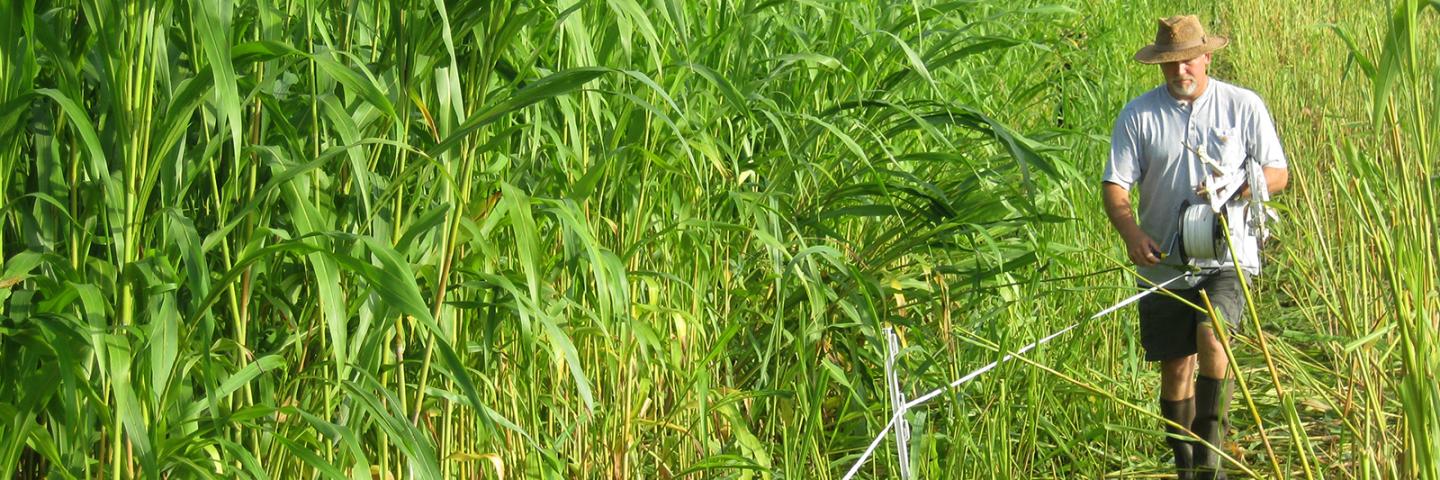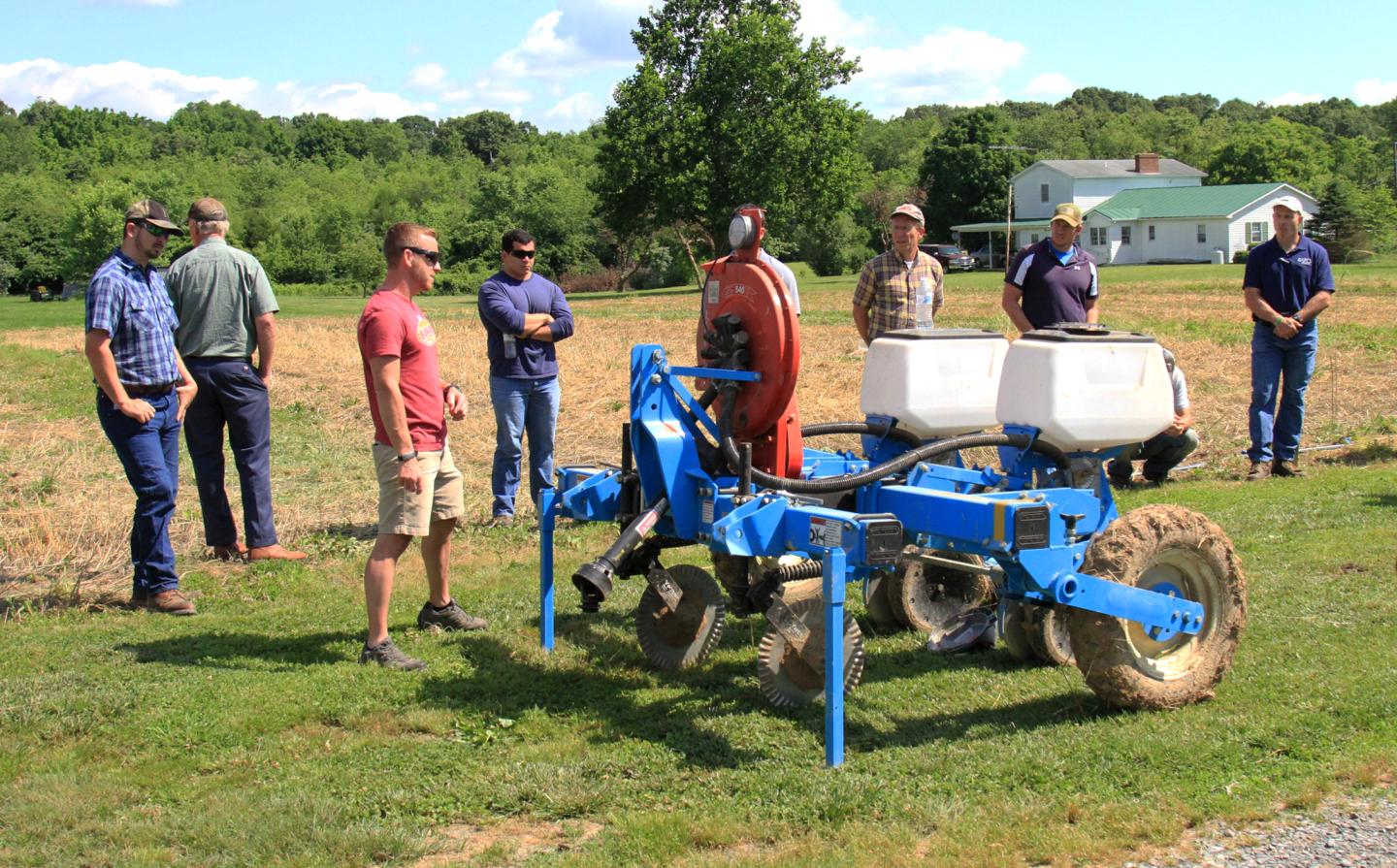
The Conservation Innovation Grants (CIG) Program fosters collaboration to find market-based solutions to today's resource challenges and test tools, technologies and strategies for next-generation conservation activities on America’s working lands.

David Sours, Page County produce grower
“I would never have invested in the equipment to try out a new tillage system without this grant and the partnership project ... we’re grossing less than we did a few years ago but netting much more.”
Virginia Overview
Return on investment is a key factor in most financial decisions and a big selling point for CIGs. These partnership projects have checked the box on that risk versus reward measurement for the past 10 years as top performers in accelerating the evaluation and adoption of new approaches to natural resource protection.
Like their national counterparts, state CIGs allow NRCS to leverage partner resources to double our investment in field testing, evaluation and implementation of conservation technologies, practices and systems. At least 50 percent of the total project cost must come from non-federal matching funds (cash and in-kind contributions) provided by the grantee.
Technologies/approaches tested in successful projects are often identified for potential integration into the agency’s conservation practice toolkit to offer additional production and operational benefits for producers. Grantees provide technical assistance required to successfully complete the project with NRCS overseeing each project receiving an award. Conservation approaches or technologies must be sufficiently studied to indicate a likelihood of success to be considered likely candidates for technology transfer.
Scope and Eligibility
State CIGs cover a smaller geographic area than national projects and may be farm-based, multi-county, small watershed or statewide in scope. These innovative on-the-ground conservation activities include pilot projects and field demonstrations.
Proposed activities must involve EQIP-eligible producers and funding provided directly or indirectly is counted toward producer’s EQIP payment limitation. Projects must also conform to the description of innovative conservation projects or activities published in the funding notice. For example, technologies and approaches commonly used in the geographic area covered by the application that could receive EQIP funding are not eligible for funding through CIG.
Equal Access
NRCS recognizes the need to provide special consideration to historically underserved producers and strives to ensure that they can also benefit from innovative technologies and approaches. At least 10 percent of the total funds available for Virginia’s FY 2022 CIG were set aside for proposals from these individuals as well as veteran farmers or ranchers or community-based organizations comprised of or representing these entities.
CIG Resources
-
Virginia CIG Fact Sheet - April 2022 (1.64 MB)
Learn More
State CIG funding notices are posted on the federal eGrants portal, www.grants.gov and may also be accessed through our website. Each notice will specify the information required from applicants. Complete applications must be submitted to the address identified in state notice.
The 2022 Virginia CIG Notice of Funding opportunity focused on research, demonstrations, outreach and educational initiatives to advance adoption of soil health management practices in Virginia.
State Contact:
Carlie Pemberton, Virginia CIG Program Manager
PH: 540-684-9948 | Email: Carlie.Pemberton@usda.gov
Additional Information
Webinars
NRCS has established a webinar series to allow employees, partner conservationists and other interested stakeholders to hear directly from CIG grantees.
Fact Sheet
General information about the CIG program, who is eligible and how to apply.
Support for Historically Underserved Producers
CIG provides special consideration and benefits to Historically Underserved applicants and projects that support Historically Underserved producers.
Congressional Report
The 2021 Congressional report briefly describes the history of CIG and how the program is managed.
Ready to get started?
Contact your local service center to start your application.
How to Get Assistance
Do you farm or ranch and want to make improvements to the land that you own or lease?
Natural Resources Conservation Service offers technical and financial assistance to help farmers, ranchers and forest landowners.

To get started with NRCS, we recommend you stop by your local NRCS field office. We’ll discuss your vision for your land.
NRCS provides landowners with free technical assistance, or advice, for their land. Common technical assistance includes: resource assessment, practice design and resource monitoring. Your conservation planner will help you determine if financial assistance is right for you.
We’ll walk you through the application process. To get started on applying for financial assistance, we’ll work with you:
- To fill out an AD 1026, which ensures a conservation plan is in place before lands with highly erodible soils are farmed. It also ensures that identified wetland areas are protected.
- To meet other eligibility certifications.
Once complete, we’ll work with you on the application, or CPA 1200.
Applications for most programs are accepted on a continuous basis, but they’re considered for funding in different ranking periods. Be sure to ask your local NRCS district conservationist about the deadline for the ranking period to ensure you turn in your application in time.
As part of the application process, we’ll check to see if you are eligible. To do this, you’ll need to bring:
- An official tax ID (Social Security number or an employer ID)
- A property deed or lease agreement to show you have control of the property; and
- A farm number.
If you don’t have a farm number, you can get one from USDA’s Farm Service Agency. Typically, the local FSA office is located in the same building as the local NRCS office. You only need a farm number if you’re interested in financial assistance.
NRCS will take a look at the applications and rank them according to local resource concerns, the amount of conservation benefits the work will provide and the needs of applicants. View Application Ranking Dates by State.
If you’re selected, you can choose whether to sign the contract for the work to be done.
Once you sign the contract, you’ll be provided standards and specifications for completing the practice or practices, and then you will have a specified amount of time to implement. Once the work is implemented and inspected, you’ll be paid the rate of compensation for the work if it meets NRCS standards and specifications.

